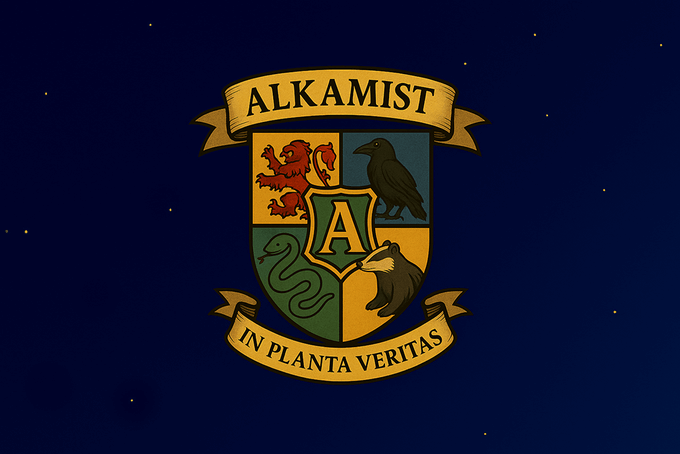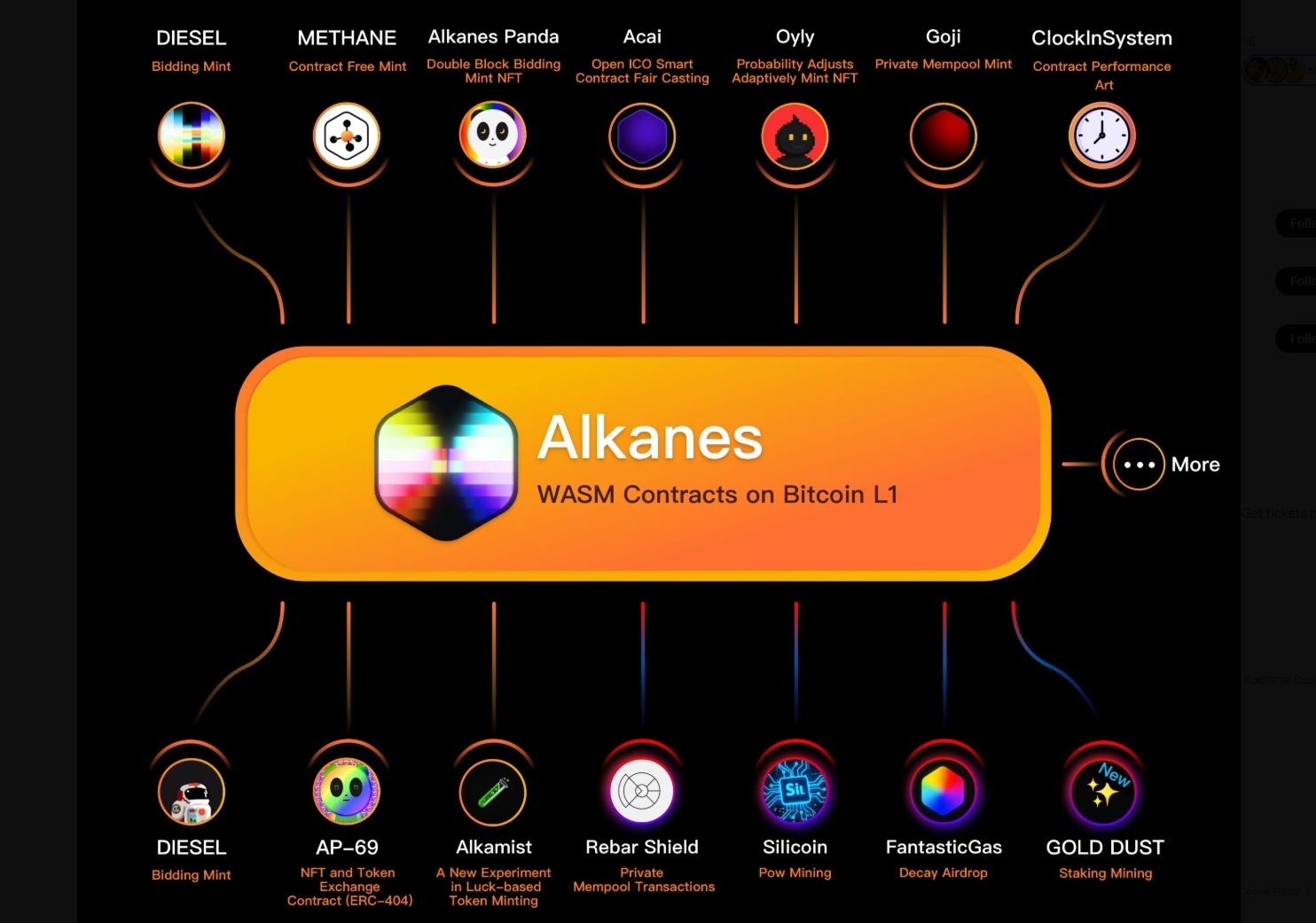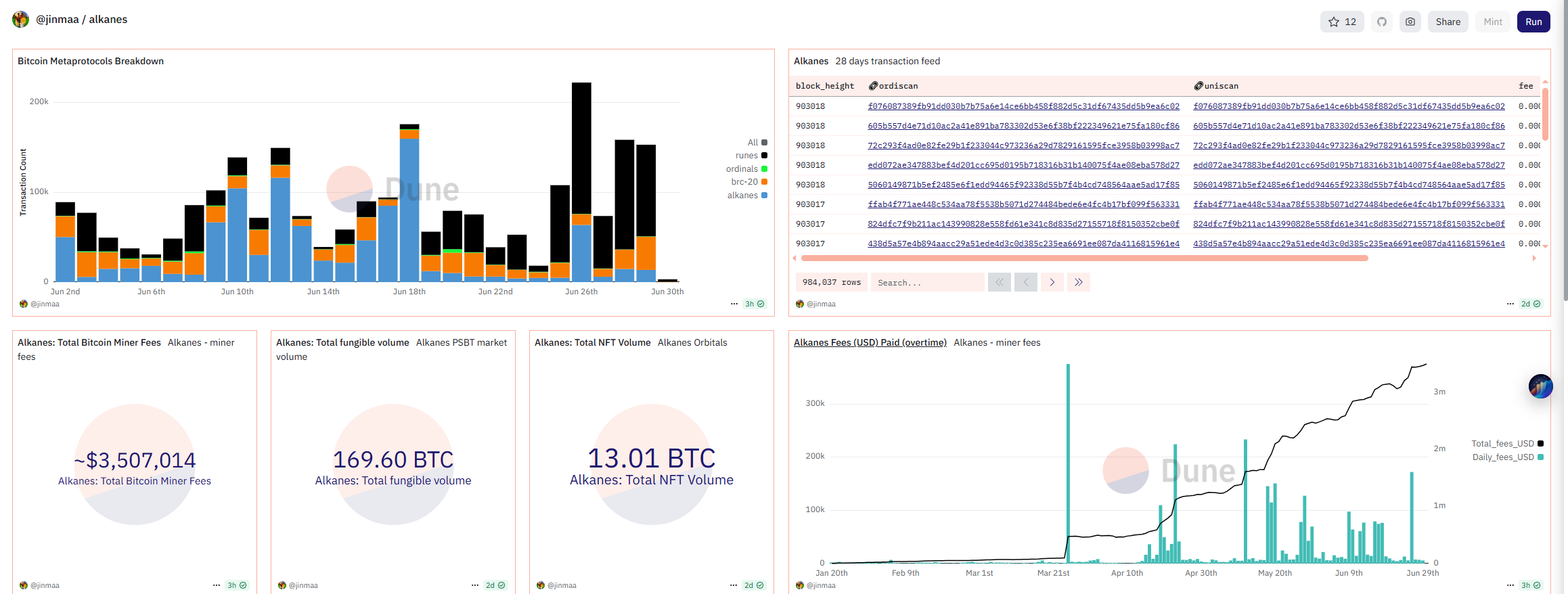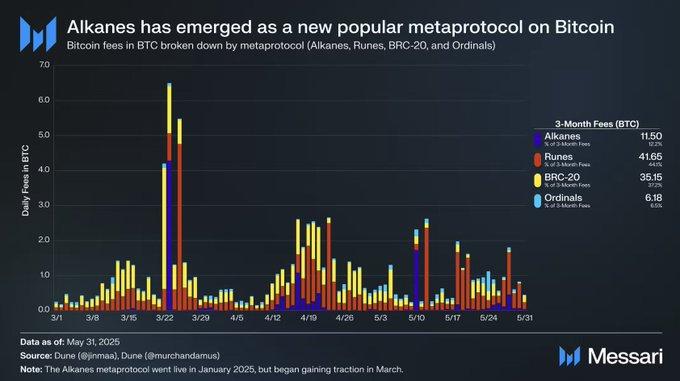With the Ordinals and Runes protocols igniting a wave of excitement in the Bitcoin ecosystem, a new metaprotocol is gradually emerging — Alkanes. In mid-2025, Alkanes became a new breakthrough point for Bitcoin's native application capabilities, opening a door for developers to deploy smart contracts and issue tokens on Bitcoin. —— Produced by AiCoin Research Institute
The Alkanes protocol is becoming another major investment option for on-chain retail investors and speculative funds following BRC-20.
1. What is the Alkanes protocol?
Alkanes is a new type of metaprotocol built on the Bitcoin mainnet, developed by Oyl Corp, aimed at introducing trustless smart contract functionality to the Bitcoin base layer without relying on bridging or external execution layers.
It utilizes Bitcoin's witness data and OP_RETURN fields to execute smart contracts and track state changes, with the relevant execution logic and state transitions handled through an indexing framework, directly associating all on-chain activities with Bitcoin's block production and finality status.
In terms of technical approach, Alkanes is similar to Ordinals (NFT) and Runes (tokens), but significantly expands the functional dimension by supporting a WASM (WebAssembly)-based smart contract execution environment, making it possible to build applications, issue assets, and interact with protocols.

2. Core Capability: Stronger Programmability than Runes and BRC-20
Unlike the Runes and BRC-20 standards, which are primarily used for token issuance and transfers, Alkanes provides complete smart contract programmability, supporting:
Automated Market Makers (AMM)
Staking contracts
Free Minting
NFT exchanges and other complex logic
All these functions can be executed natively and trustlessly on the Bitcoin chain, without relying on any sidechains or Layer 2.
The Alkanes protocol does not compete with Ordinals or Runes, but rather can run in parallel and collaborate. For example, users can mint new Alkanes assets using Ordinal NFTs, achieving combinations and interoperability between protocols.
3. Key Technologies: Protostones and Orbitals Standards
The Alkanes protocol introduces a new on-chain data primitive: Protostones, similar to Runestones in the Runes protocol. Each Protostone can contain multiple information instructions, which can be used to implement complex operations such as minting, exchanging, and burning, with all logic executed by the WASM runtime.
In Alkanes, all assets — whether fungible tokens or NFTs, are considered part of the Token architecture:
NFTs are referred to as Orbitals, a standard proposed and widely adopted by the community;
Fungible tokens are similar to Ethereum's ERC-20 but come with full smart contract support and composability.
Template Factory Mechanism
The protocol uses “factory pattern” to deploy contracts, allowing developers to directly pass parameters to existing templates without redeploying, saving block space and on-chain fees, and improving efficiency.
4. Representative Projects and Assets
Diesel Token: The first token deployed on Alkanes, its issuance rhythm is linked to Bitcoin block rewards, fully adhering to BTC's halving cycle.
Alkane Pandas: One of the currently active NFT community projects;
Oyly on Alkanes: The first free mint collectible on Alkanes.
Participants and ecosystem observers should note: Currently, the gameplay of inscriptions/NFTs is similar to the early BRC-20; if you want to discover opportunities in the new protocol, you still need to focus on on-chain activities in the mempool.

5. Key Differences with Other Protocols
Ticker names are not globally unique: Each token has a unique ID, allowing multiple tokens with the same name (e.g., Methane) to coexist, avoiding the name squatting issues seen in Runes and BRC-20;
Does not rely on sidechains or EVM: Operates entirely based on the BTC native data layer;
Supports rich applications: Complete on-chain native implementations of DeFi, NFTs, swaps, mints, staking, etc.
6. Ecosystem Development and Future Plans
The Alkanes team is building a complete set of native tools and protocol components, including:
Native AMM (Automated Market Protocol)
Stablecoin project Bound
Block explorer integration (e.g., Ordiscan, Unisat)
Wallet library (LaserEyes)
DeFi protocol support
Their goal is to create a fully Bitcoin primitive-driven application development stack (Full-stack DApp), without relying on other chains.
Oyl Corp has also open-sourced its indexing engine Metashrew and related infrastructure, making it easier for developers to review, replicate, or contribute code.
7. Protocol Launch and Development History
Protocol launch date: Early 2025, with the Diesel contract officially deployed at block 880000;
Community Mint launch: Officially started in early March;
Protocol mechanism: From the launch block, the protocol began scanning block data, automatically identifying and executing instructions.
Currently, the project is gradually growing through continuous experimentation by developers and open-source collaboration. It has already attracted some BTC protocol OGs and Runes project developers to participate in interaction and ecosystem building.
8. Current Status of Protocol Development and On-chain Data Performance
Since its launch in early 2025, the Alkanes protocol has shown strong ecological expansion momentum. In addition to the continuous activity of the developer community and the advancement of open-source infrastructure, its on-chain usage rate has significantly surged.
According to the Jinmaa data panel, as of June 2025, Alkanes has become the third-largest protocol by daily transaction count on the Bitcoin mainnet, only behind Runes and BRC-20.
On June 18, 2025, Alkanes set a daily transaction peak of 159,700, marking its widespread penetration in practical applications. This data also indicates that Alkanes has become one of the core forces driving the development of the Bitcoin on-chain application ecosystem.

9. A New Entry Point for the BTC Application Ecosystem: “Composability + Sovereignty + Liquidity”
Alkanes is not just another token standard; it provides Bitcoin developers with a development platform that integrates composability, sovereignty, and native liquidity. It may become one of the most representative technological transformation forces in the Bitcoin ecosystem following the cultural revolution sparked by Ordinals and the token experiments driven by Runes.
According to a Messari report, Alkanes marks the next stage of evolution for Bitcoin metaprotocols, moving from static token issuance to dynamic application deployment.

免责声明:本文章仅代表作者个人观点,不代表本平台的立场和观点。本文章仅供信息分享,不构成对任何人的任何投资建议。用户与作者之间的任何争议,与本平台无关。如网页中刊载的文章或图片涉及侵权,请提供相关的权利证明和身份证明发送邮件到support@aicoin.com,本平台相关工作人员将会进行核查。




